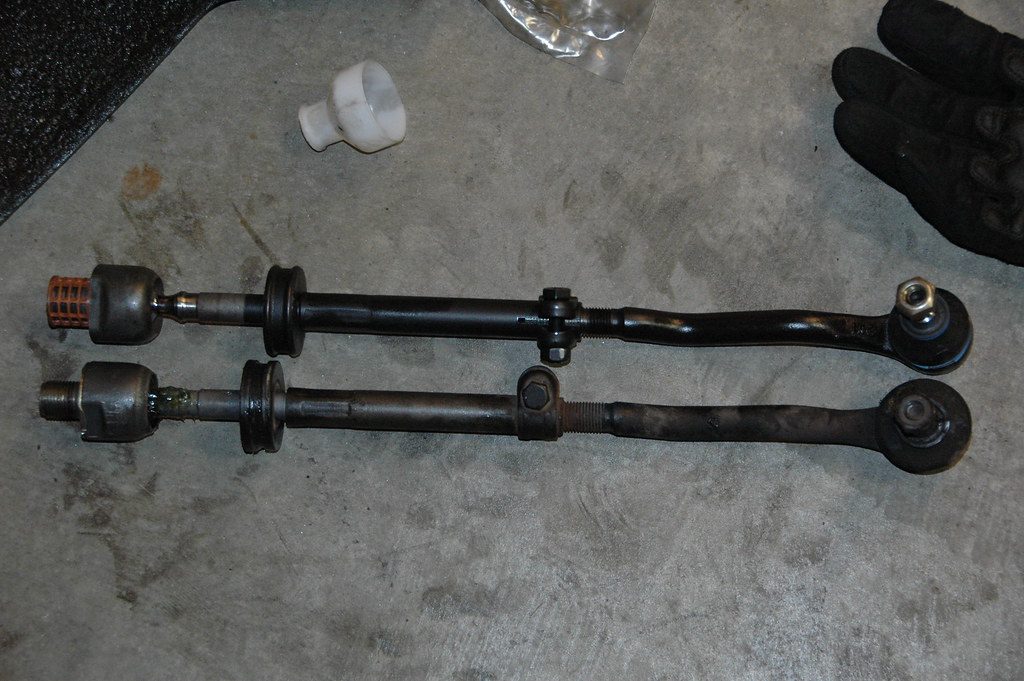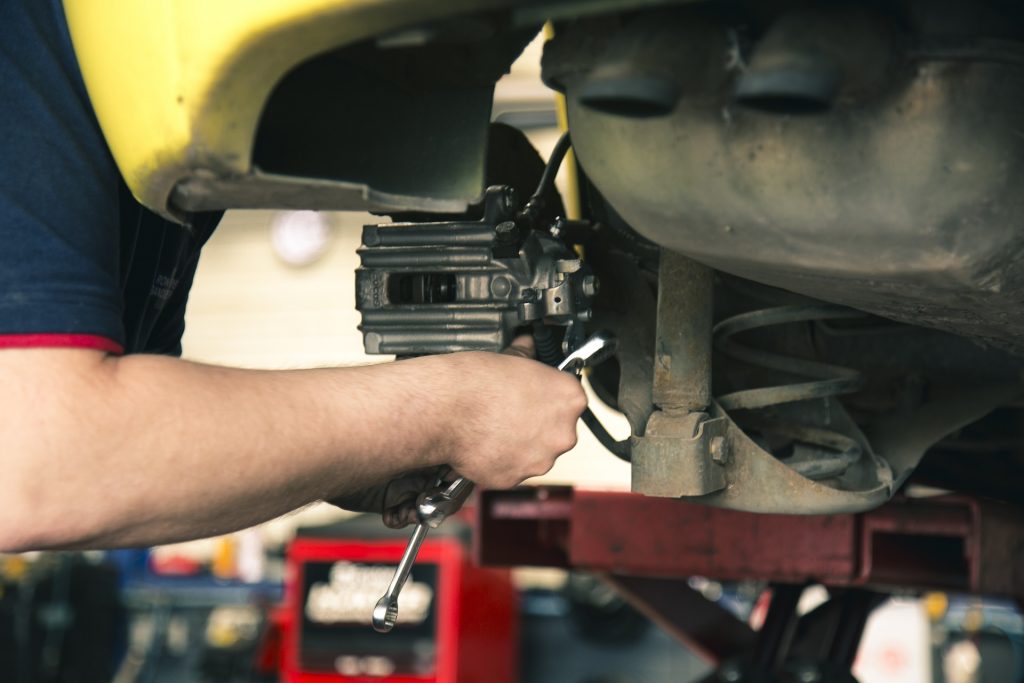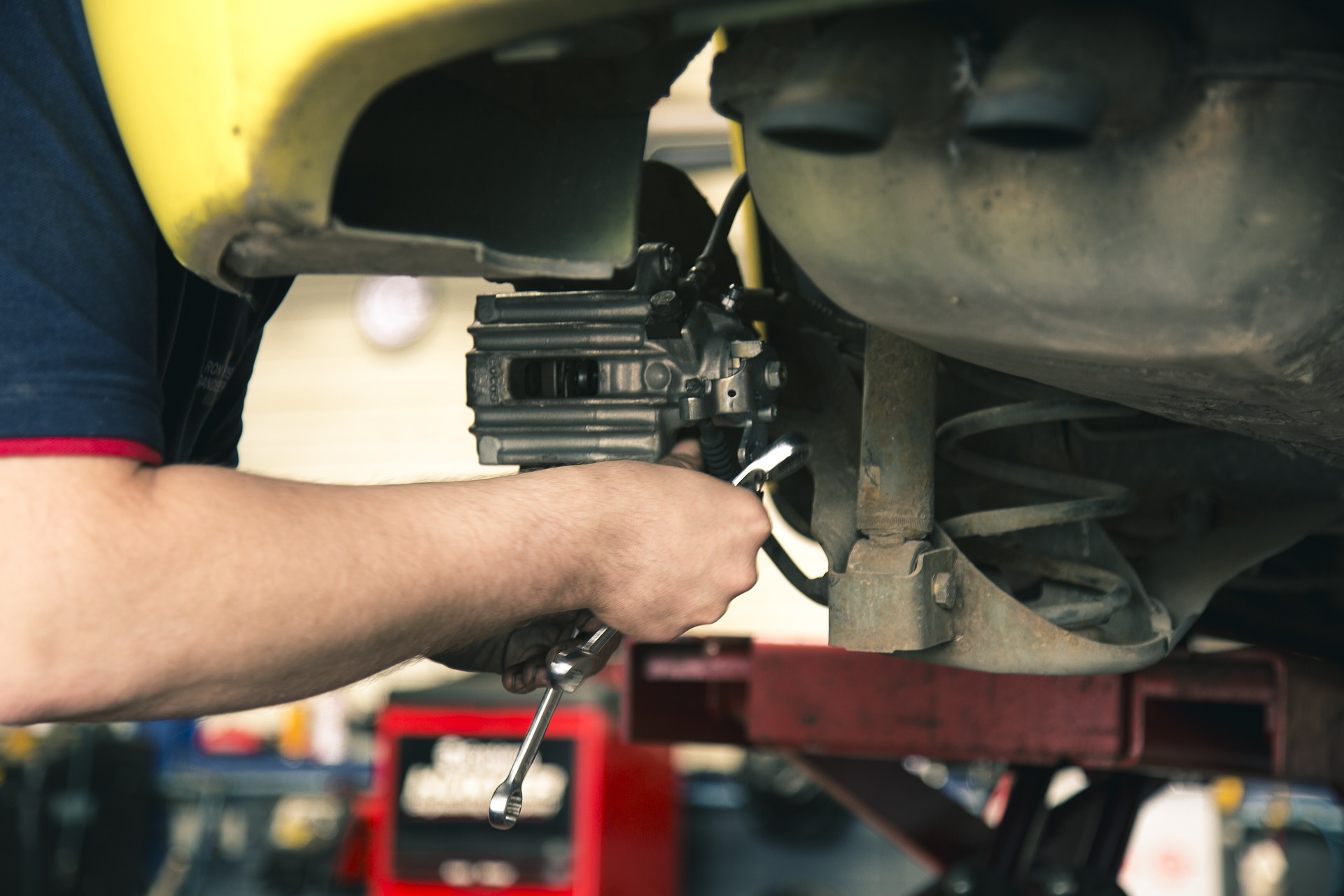What are tie rods?
Modern vehicles use a rack and pinion steering system, which incorporates tie rods to help move the wheels. Tie rods are the parts that are attached on both ends of the steering rack. The pinion rolls over the rack which is fixed in a slot.

What do tie rods do?
They both help push and pull the front tires as you turn the steering wheel. Tie rods are of utmost importance to allow you to move in the direction you wish and ensure a car’s overall safety. It keeps the vehicle stable with the tires well gripped on road.
Like with all vehicle parts, tie rods get worn at some point in time. Some car owners may never have to fix them while some other drivers may have to fix them every 5 years. It depends on the quality of the road, potholes, accidents, and overall driving conditions.
3 warning signs of bad tie rods
If your tie rods are not inspected on a regular basis, you should watch out for the below warning signs.
1. Tight steering wheel
When the steering wheel feels tight, it is typically because of the tie rods or an issue with the gearbox. If you are lucky, the issue can be solved by simply topping up with some more power steering fluid. Otherwise, you will need a certified garage or professional mechanic to install new tie rods. Tie rods cannot be repaired and when they are worn out you have no alternative than installing new ones.
2. Your vehicle is pulling on one side
If your vehicle is pulling on one side while driving, or when braking, bad tie rods are the most probable culprits. You may also notice uneven wear on the inside and outside edge of the tire.
3. A knocking sound when cornering
The most common sign of bad tie rods is a knocking sound you can hear from the front end of the vehicle when you turn into a parking slot, or when you are turning at low speed in a tight corner.
If the tie rods on your vehicle indeed need replacement, it’s recommended to change both the right and left sets of tie rods, followed by a wheel alignment.

How to check if your tie rods are bad?
It is not such a difficult task if you understand a few bits of your car mechanism. Are you ready? Ok, let’s get your hands dirty and let’s get a bit technical, but easy. Jack up the front of your vehicle until the wheel is well off the ground. Check for play by placing your hands at three o’clock and nine o’clock positions (the midpoint of the left and right sides of the tire). Press the right, then left by pushing alternatively on each side. If there is play, keep investigating further.
Just behind the brake rotor of each wheel, you will see the tie rod end. If you have worn bushings, it is more likely that road grit has accumulated inside and destroyed them, so you will need to install a new pair of tie rods.
Preventive care
In some cars, tie rod ends have grease fittings and must be greased periodically, say every two years or at every oil change. Spot the grease fitting on the outer edge by the bushings. Use a grease gun filled with the proper grease and fill in new grease. The new grease pushes out the old, and any collected contaminants and road grit.
However, in many modern vehicles, tie rod ends don’t need any maintenance because they are filled with grease and sealed at the factory. Hence, they won’t ever be contaminated or need any replacement unless any major damage caused by an accident.
How much does it cost?
Tie rods are not expensive to replace. All in all, it will cost $20-$95 part plus $50-$110 labor for replacing the outer tie rods and $25-$102 part plus $60-$150 labor if you are replacing the inner tie rod ends. You should add the wheel alignment cost that will follow the tie rod replacement, which will amount to $50-$75 for a front-end alignment that only involves the two wheels on the front of the car or $100-$150 for a four-wheel alignment.
If you suspect your tie rods are in bad condition, there are a few simple checks that a professional mechanic can make to see if there’s any excess movement in the tie rods. If your front wheels have encountered any extreme road conditions or unusual contact with a deep pothole, it is a good idea to get the tie rods inspected by a professional mechanic to ensure the stability of your car.
I hope this blog has shed some light on the tie rods of your vehicle. Remember to jot down your comments below.

